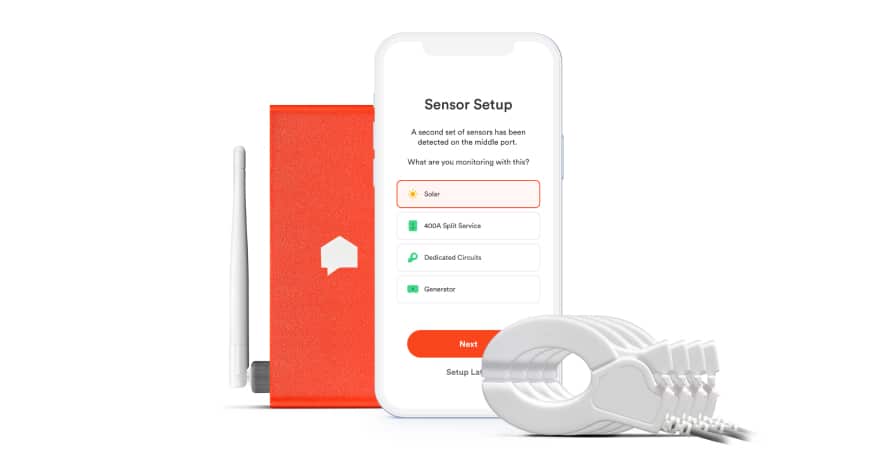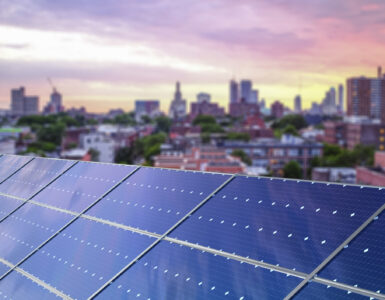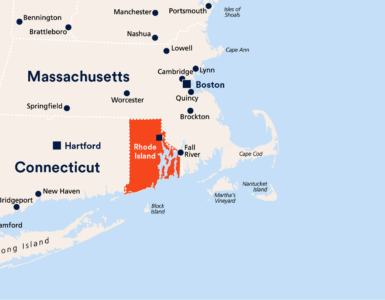Electrification offers upgrades on both sides of electric meters
Many utilities have pilot projects underway to study how electric vehicles (EVs) will fit into their home-energy management plans as the reality of the transition to electric transportation starts to take shape. The goal of these projects is to explore the benefits – on both sides of the electric meter – of linking EVs to energy management programs and technology. Below we explore where the convergence of these technologies may be headed and look at some of the opportunities to find success for both electric utilities and EV drivers.
EV growth turns a corner
The move to electrify transportation in the US and around the globe is ramping up fast. US EV sales rose from 3.2% of new cars sold at the start of 2022 to 5.7% by year’s end according to CleanTechnica. Some lawmakers are helping drive the change as progressively tightening federal legislation on internal-combustion engines (ICE) coincides with adoption by five US states of ICE bans by 2035, according to IHS Markit in a recent whitepaper. The research firm predicted US battery-electric vehicle (BEV) sales will reach 25-30% of total passenger car sales by 2030 and 45-50% by 2035.
At the same time, climate mandates are driving deployment of ever greater amounts of variable renewable energy sources. This makes balancing the electric grids more challenging. Shifting the energy demand from transportation to those same grids is propelling interest in finding new answers to balance supply and demand.
According to a Dept of Energy (DOE) tally cited by DOE’s National Renewable Energy Lab (NREL) "DOE’s National Renewable Energy Lab (NREL)") in April of last year, about 80% of EV charging happens at home. Another study from researchers at Stanford University showed that if EV sales grow as rapidly as expected over the next decade – and most drivers continue to charge their electric cars at home – vehicle charging could strain the electricity grid, increasing net demand at peak times by 25%. That could be a problem as parts of the U.S. struggle to keep the lights on amid heat waves and rising electricity demand. The good news is that unlike other home loads, EV charging is dispatchable and has more flexibility to be moved throughout the day. Looking at the bigger picture, this makes EVs a natural fit with whole-home energy management alongside solar, battery storage, and energy efficiency.
Giving EV drivers power
EV charging demand (kW) can be high – 2X an electric dryer and 30-50% of monthly residential usage (kWh). However, left unchecked, EVs have unpredictable load with no guaranteed charging patterns which creates the potential for grid stress. Yet unlike other home energy loads, EV charging has more flexibility to be moved throughout the day.
Today, one major mechanism to manage charging is through electric rates. Time-of-use (TOU) pricing is used by some utilities around the country to incentivize customers to consume energy at off-peak times using predetermined price signals. There are also specific rates geared towards electric vehicle owners. They can make charging patterns more predictable and more aligned with grid needs. For example, Xcel Energy and National Grid have TOU rates specifically for EV owners.
These rates have some mixed results, although some of that likely has to do with less effective means of deploying the rate to customers. Apps like Sense can better alert customers to when their on-peak and off-peak rates are kicking in and whether their charger kicks in before the off-peak period.
But optimizing solely through rates will not meet the needs of a more dynamic grid. For example, a study by Sense revealed that TOU rates do not always align to the real time periods of lowest carbon intensity. “Smart” or “Managed” charging should take into account not only rates, but overall awareness of what’s going on in the home – what else is using power and potentially excess generation from rooftop solar – as well as availability of low-carbon resources on the grid. The same study showed not only could this help with reliability of the grid but by maximizing renewable energy resources, we could achieve a carbon reduction of up to 43% with this type of automation.
Achieving this type of orchestration will require two critical components:
- The intelligence to make these decisions must take into account the full picture of the home. Telematics and charger solutions may be a part of it, but the ubiquity of smart meters and their ability to see both in front of and behind the meter uniquely position them to be at the center of the approach.
- Consumers must be able to set dynamic preferences that give utilities bandwidth for maximum flexibility without inhibiting their lifestyle.
Sense is uniquely positioned to play a key role as these two forces – climate-change mitigation and the adoption of EVs – converge in homes. Sense technology helps customers have a real-time understanding of the device level energy use within their homes, and the easy-to-use app will allow customers to set preferences and respond in real-time when action is needed.
Positioning EVs for better reliability
Customer satisfaction with their electric service and electricity reliability have been hot topics in recent years, especially with the growth in devastating weather events across the map, including hurricanes, winter storms, and wildfires. Giving utilities and their customers every possible advantage in managing the use and delivery of power is critical and many utility regulators and stakeholders are working to address these concerns.
Recent headlines heralded one of California’s big-three utilities using EV pickup trucks from a popular brand as backup power and energy management in homes. Many utility pilots are underway because the potential for harnessing EVs for backup power in the home (V2H) as well as a resource for overall grid resiliency (V2G) is significant. Electric car batteries can hold approximately 60 kilowatt hours of energy, enough to provide backup power to a home for a couple of days, if the home electrical use is conserved. As an example, PG&E offers rich incentives to homeowners that will consider enrolling in both V2H and V2G programs.
But the opportunity for harnessing power from EVs extends beyond emergencies. Regulators and legislatures are also looking to position EVs as a potential solution for grid constraints that may result from intermittency of renewable generation. Again in California, a new bill has been introduced that would require all EVs in California to be equipped with the ability for “bidirectional” charging by 2027. Bills like these ensure the stability of electric power not only for EV owners but for all consumers who could benefit from these “rolling batteries” when the grid becomes constrained.
For these types of programs to be successful, customers have to feel like they are in the driver’s seat. (Pun intended!) Customers want to do the right thing, but they also want to know they can still have reliable transportation to their next destination when needed. With solutions like Sense, the whole home’s needs and resources can be calculated along with customer preferences for their vehicle so the right decision is made each time.
In the end, all of these programs can become richer when consumers have the choices they need to save money on energy and manage the growing complexity in energy technologies and services, including how and when they charge or discharge their EVs. Having Sense in the home and in smart meters will help Sense’s utility partners and their customers achieve the goals they all share – reliable, clean, affordable electricity – as brand-new EVs continue to roll out to homes across the US.







